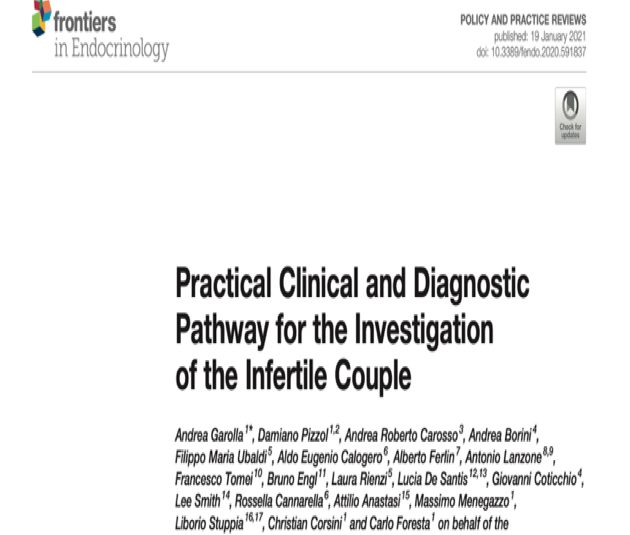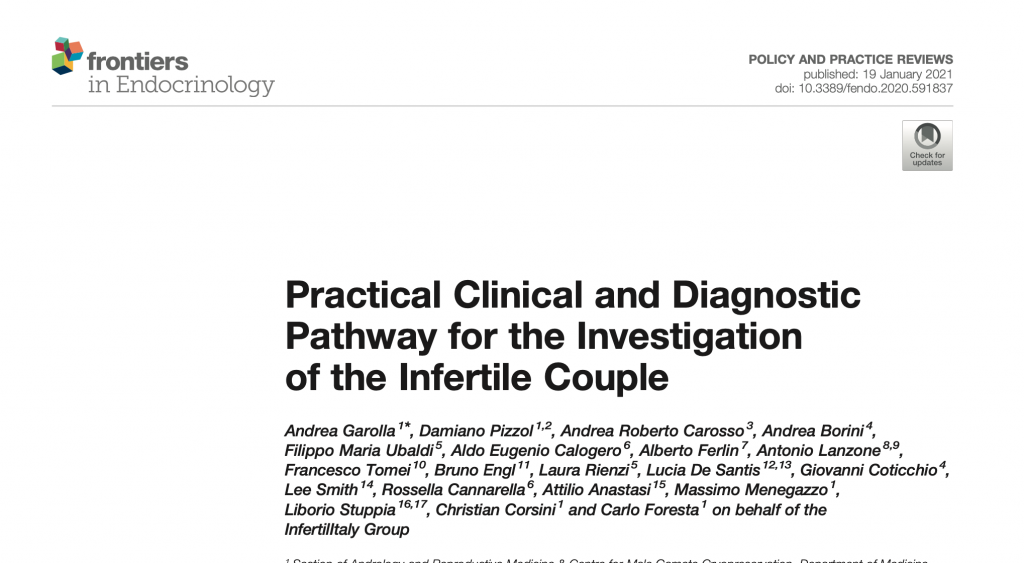
Andrea Garolla, Damiano Pizzol, Andrea Roberto Carosso, Andrea Borini, Filippo Maria Ubaldi, Aldo Eugenio Calogero, Alberto Ferlin, Antonio Lanzone, Francesco Tomei, Bruno Eng, Laura Rienzi, Lucia De Santis, Giovanni Coticchio, Lee Smith, Rossella Cannarella, Attilio Anastasi, Massimo Menegazzo, Liborio Stuppia, Christian Corsini, Carlo Foresta
Frontiers in Endocrinology, 19 January 2021 | https://doi.org/10.3389/fendo.2020.591837
Abstract
Capsule: This expert opinion summarizes current knowledge on risk factors for infertility and identifies a practical clinical and diagnostic approach for the male and female partners of an infertile couple aimed to improve the investigation and management of fertility problems.
Background: Infertility represents an important and growing health problem affecting up to 16% of couples worldwide. In most cases, male, female, or combined factor can be identified, and different causes or risk factors have been related to this condition. However, there are no standardized guidelines on the clinical-diagnostic approach of infertile couples and the recommendations concerning infertility are sometimes lacking, incomplete, or problematic to apply.
Objective: The aim of this work is to provide an appropriate clinical and diagnostic pathway for infertile couples designed by a multidisciplinary-team of experts. The rationale is based on the history and physical examination and then oriented on the basis of initial investigations. This approach could be applied in order to reduce variation in practice and to improve the investigation and management of fertility problems.
Methods: Prominent Italian experts of the main specialties committed in the ART procedures, including gynecologists, andrologists, embryologists, biologists, geneticists, oncologists, and microbiologists, called “InfertilItaly group”, used available evidence to develop this expert position.
Outcomes: Starting from the individuation of the principal risk factors that may influence the fertility of females and males and both genders, the work group identified most appropriate procedures using a gradual approach to both partners aimed to obtain a precise diagnosis and the most effective therapeutic option, reducing invasive and occasionally redundant procedures.
Conclusions: This expert position provides current knowledge on risk factors and suggests a diagnostic workflow of infertile couples. By using this step-by-step approach, health care workers involved in ART, may individuate a practical clinical management of infertile couples shared by experts.

